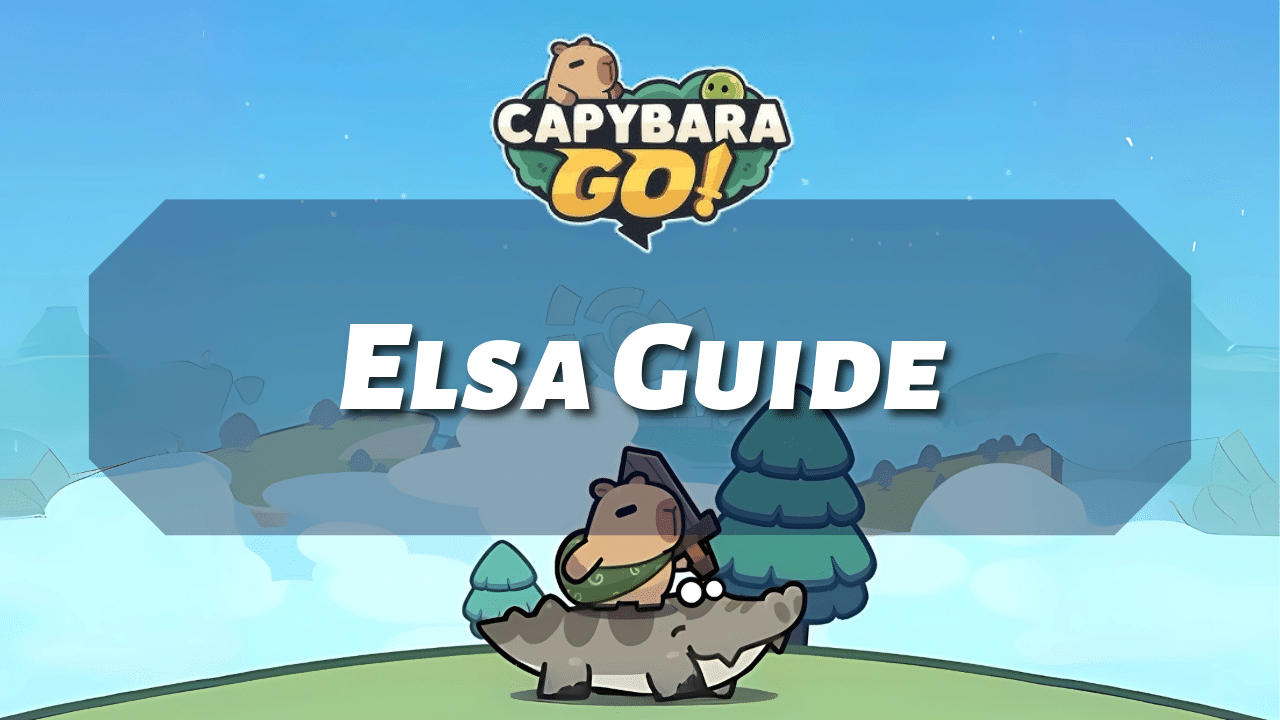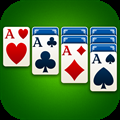
Introduction to Elsa
The Capybara Go Elsa Guide provides essential insights into one of the game’s best pets, Elsa, an Immortal-tier companion with exceptional abilities and stat growth. She is highly versatile and effective across different builds, making her a top choice for players looking to optimize their team. Her well-rounded skill set allows both new and experienced players to maximize their battle potential.
Elsa’s battle skill activates every round, dealing damage based on the hero’s ATK while reducing the target’s ATK and increasing the damage they take. This effect can stack up to three times, making her especially powerful in prolonged battles by continuously weakening enemies and increasing their vulnerability. This ability is particularly useful in sustained fights and boss encounters, where stacking debuffs can turn the tide of battle.
Acquiring Elsa’s statue significantly enhances her effectiveness, making her a strong option for free-to-play players. Even a zero-star Elsa statue provides noticeable benefits, making her a worthwhile investment early in the game. With her statue, her Ice Queen ability gains increased damage, a chance to freeze enemies for one turn, and an increased debuff stack limit of five.
These improvements make Elsa even more powerful by adding a valuable crowd control effect while amplifying team damage. With her ability to weaken opponents, deal consistent damage, and provide strategic utility, Elsa remains one of the most effective pets in Capybara Go. The Capybara Go Elsa Guide ensures players understand how to maximize her potential and integrate her effectively into their team composition.
How to Obtain Elsa
Elsa can be obtained through several methods in Capybara Go, though acquiring her may require patience and luck.
The primary way to unlock Elsa is through Pet Summoning, which becomes available at level 11. Once you reach this level, you have a chance to summon Elsa through the pet summon system, though the results are random. Additionally, she can be hatched from pet eggs, but the chances are rare and depend on your hatching level. Regularly opening pet eggs contributes to your progress and increases the likelihood of obtaining high-tier pets.
Events also offer opportunities to obtain Elsa. She was previously featured as a reward in special events like the Thanksgiving event and the Turkey Festival event, where she had a low draw chance from the lucky wheel. The only guaranteed way to get her during this event was by purchasing the Horn of Plenty from the gift pack and making at least 100 draws. The Mystic Sea event also provided a chance to obtain the Elsa statue, which enhances her abilities.
Another way to get Elsa is through the Capy Gacha (Cappy machine), where she may appear as a possible reward. However, like most gacha mechanics, this method depends on luck and persistence.
There is also a small chance of obtaining Elsa from chests in the game, though the drop rate is relatively low. To increase your chances of obtaining an Immortal-tier pet like Elsa, focus on opening pet eggs to reach level 9, as this unlocks the third pet slot. Reaching this milestone improves your overall pet collection and progression, increasing the likelihood of summoning rare pets.
Elsa’s Skills and Abilities
Elsa’s battle skill activates every round, dealing damage based on the hero’s ATK while also applying powerful debuffs. The skill deals damage equal to 100%-140% of the hero’s ATK, depending on its level. In addition to dealing damage, it reduces the target’s ATK by 5%-7% and increases the damage they take by 10%-20%. These effects stack up to three times and last until the battle ends. This makes Elsa especially valuable in prolonged fights, as her debuffs continuously weaken enemies while amplifying the damage they receive.
As Elsa levels up, she unlocks passive bonuses that enhance the hero’s stats. At levels 5, 25, 45, 65, and 85, she increases the hero’s ATK by 6%, improving overall damage output. At levels 10, 30, 50, 70, and 90, she boosts the hero’s HP by 6%, increasing survivability. At levels 15, 35, 55, 75, and 95, she raises the hero’s DEF by 6%, reducing incoming damage. Every 20 levels, up to level 100, she upgrades her battle skill to the next tier, further increasing its damage and debuff effects.
To maximize these benefits, it is recommended to level up all pets to key milestones such as levels 5, 10, and 15. Doing so ensures that you receive stat bonuses from multiple pets, significantly strengthening your team’s overall combat potential.
The Elsa Statue and its Benefits
The Elsa Statue upgrades Elsa into Queen – Elsa, transforming her into an Immortal+ pet and significantly enhancing her stats. While the statue itself does not grant additional stat bonuses, its collectible star level determines the upgrades Elsa receives.
At level 0, the Elsa Statue increases her damage, adds a chance to freeze enemies for one turn, and raises the debuff stack limit from three to five stacks. This makes Elsa even more powerful in extended battles, as she can deal more damage and apply stronger debuffs.
As the collectible star level increases, Elsa gains further enhancements. At levels 1, 2, 3, 5, 6, 7, 8, and 10, her overall pet stats increase by 15% per level, making her stronger in battle. At level 4, the hero’s damage is increased by 10%, stacking up to three times until the end of the battle, further boosting offensive potential. At level 9, Elsa gains an additional effect that allows her to ignore control immunity rate by 40%, making her more effective against enemies with crowd control resistance.
The Elsa Statue is a crucial upgrade for players looking to maximize Elsa’s potential, making her a formidable asset in any team.
How to Use Elsa Effectively
Elsa is a versatile pet that fits well into most team compositions, making her a valuable asset for both new and experienced players. She excels in prolonged battles due to her ability to weaken enemies and amplify the damage they take. Pairing Elsa with pets that can take advantage of her debuffs, especially those that deal extra damage to frozen targets, can enhance her effectiveness. In the early game, Snowy and Chomper are solid options until better pets become available. If Elsa is not accessible, Purple Demon Fox is a good alternative, while Elle can help in situations where survivability is an issue.
Elsa’s skill activates every round, dealing damage, reducing the target’s attack, and increasing their damage taken. These effects stack, making her particularly effective in drawn-out fights where enemies gradually weaken over time. The pets actively used in battle will determine which build stats are applied, so ensuring the right pets are in play is crucial for optimizing performance.
For pet builds, it is beneficial to focus on basic attack and skill damage reduction, but since damage reduction has a cap, shifting focus to global attack and global health after reaching the cap can further strengthen the team. Unlocking an Arcana statue for a pet grants additional benefits and can be purchased from the crystal shop to enhance a pet’s power.
All pets should be leveled up, even if they are not actively used in battle, since they provide passive upgrade effects. Upgrading pets to level 5 grants a hero attack boost, making it beneficial to prioritize getting all pets to level 5 first, then progressing to levels 10 and 15. Skills should be selected based on the chosen build and gear setup, ensuring synergy between them to maximize effectiveness.
For free-to-play players, managing gems wisely is essential. Purchasing specific packs with gems can be a more effective way to progress compared to spending them on random summons. Using the Elsa Statue does not grant direct stat bonuses to the pet itself. Instead, all benefits are based on the collectible star level. Elsa is widely considered one of the best pets in the game and is highly effective for a variety of builds and playstyles.
Gear and Skill Synergies
Selecting the right gear and skills is crucial for optimizing performance in Capybara Go. Skills should align with the build and chosen equipment to maximize effectiveness. For a skill-focused build, Reaper’s Staff is a strong weapon choice, with Nomad Staff or Forest Staff serving as alternatives if unavailable. Dragon’s Breath Armor is ideal for chest gear, with Revival Cape and Tunic as backup options. The best ring setup consists of two Judgment Rings, though Magic Ring is also viable. For accessories, Reckoning Badge is preferred, but Icy Bubble is a suitable substitute.
Mythic skills such as War Veteran, Super Life, Battle-Hardened, Golden Egg, Spawn of Evil, Angel Power, Trinity Force, Deadly Spikes, Super ATK, Super DEF, Super Lightning, and Wizard provide significant boosts. Legendary skills like Frozen Touch and Royal Crown complement skill-based builds, while common skills such as Rage Dagger and Hard add extra benefits.
Pets should focus on universal stats, with a balance of Global ATK and Global HP being the best approach for most players. Some skills work well in specific situations but come with trade-offs. Werewolf enhances combo and counter builds but lowers skill damage. Wizard is effective with Lightning and Magic Spear but weakens combo and counter abilities. Tamer increases pet damage at the cost of crit rate. Vampire improves lifesteal while reducing skill damage, making it best suited for combo and counter-heavy setups. Orc boosts crit rate and crit damage but removes rage gain, making it suitable for non-rage builds.
For a free-to-play whisperer build, Whisperer +2 (Legendary) is the best weapon, granting a 35% weapon crit bonus, affecting both basic attacks and rage moves. Dragon Breath Armor +2 is a strong armor choice. Rings should include Judgment Ring +2 and Guardian Ring +2, while accessories like two Bloody Grail +2 provide additional benefits. The Luminous Dragon mount grants a 3% crit rate per round, stacking up to 15%.
Key hero insignias and brands include Judgement Reaper, Knight of the End, Murlock, Harpy, and Sharp Rogue, which unlocks at level 61, with Green Slime becoming available at Chapter 81. The Unicorn pet provides an 8.5% crit rate per round, stacking up to 25.5%. Crit Mastery, when combined with the first node in the Scout tree, grants a 10% weapon crit boost, ensuring a 100% crit rate for basic attacks and rage skills.
Weapon crit does not directly affect thrown daggers, so additional skill crit is necessary. Prioritizing basic attack damage reduction and skill damage reduction in pet builds is important, with a recommended total of 75% or more if below Chapter 81. As progression continues, the focus should shift from damage reduction to increasing global attack and global health.
Strategies and Tips
Success in Capybara Go depends on strategic decision-making, efficient resource management, and proper build optimization. Choosing alliances wisely can make a significant difference during conflicts. A strong build is only part of the equation—daily encounters and a bit of luck also play crucial roles in progression.
When prioritizing stats, focus on basic attack damage reduction and skill damage reduction in pet builds. Ensuring that damage reduction combined with basic damage reduction reaches at least 75% is important, especially before reaching Chapter 81. As progression continues, once damage reduction is maximized, shift focus toward increasing global attack and global health for long-term effectiveness.
Pet management is crucial for maximizing passive bonuses. Leveling all pets to specific milestones, such as levels 5, 10, and 15, unlocks additional stat boosts that enhance overall team strength. Always upgrade pets when possible, aiming for at least +5 to gain hero attack bonuses. When assigning levels, prioritize the three pets that are actively used in battle to maximize their contributions.
Skill selection should align with playstyle, build focus, and equipped gear. The tier list serves as a useful baseline, but adjustments should always be made to suit individual builds. Similarly, gear optimization is essential, and upgrading all acquired gear ensures better stats and overall performance.
Managing resources effectively is key to long-term success. Saving materials and currency until events occur allows for more efficient spending and progression. Free-to-play players should be strategic about gem usage to maximize their impact. During events, investing in packs for gems can be worthwhile if planned properly.
When building pets, focusing on universal stats provides the most benefit. A balanced combination of global attack and global health is optimal for most players. Elsa remains one of the best pets in the game, suitable for various builds. However, using the Elsa Statue does not directly increase pet stats; all bonuses are tied to the collectible star level.
In the early game, prioritizing global attack provides the most significant combat power increase. During the first two weeks, using pets like Snowy and Chomper can be beneficial until better options become available.
For free-to-play players aiming for a Whisperer build, accumulating 210 coins from gacha challenges over six weeks is achievable. Additional coins can be obtained through dungeon dives, eventually reaching the 500 needed for key purchases. Saving resources for leaderboard growth events ensures efficient progression. Using three pity chests specifically for Whisperers allows for a legendary merge.
Clearing 150 dungeon floors provides enough gacha tokens to meet the internal pity timer for the capy gacha event, ensuring 510 gacha coins. Spending 500 of these on the capy gacha allows for claiming the luminous dragon. Investing 107,000 gems into the angel bow rotation ensures the merging of Legendary Dragon Breath Armor while triggering the internal pity timer multiple times. When leveling up heroes, prioritizing the Scout tree provides additional benefits.
Collectibles also play a significant role in strengthening a build. Opening chests offers a chance to obtain collectible pieces or even full collectibles. These items can activate set bonuses, adding stat multipliers to the player. To fully unlock a set bonus, all required collectibles must be obtained. Strengthening collectibles by increasing their star levels further enhances these bonuses, making them more impactful in battles.
Conclusion
Success in Capybara Go depends on understanding its mechanics, optimizing pet builds, selecting the right skills, and efficiently managing resources. Strategic decision-making plays a crucial role, from choosing alliances to participating in events and upgrading gear. By focusing on these elements, players can enhance their progress and maximize their in-game experience.
Elsa remains one of the best pets available, making her a strong choice for various builds. Whether playing as a free-to-play or a moderate spender, making informed decisions regarding gem usage, event participation, and pet development is key to building a competitive team and advancing through the game’s challenges.
Continuous improvement is essential. Adapting strategies based on playstyle, available gear, and evolving game mechanics ensures long-term success. While the strategies outlined in this guide provide a strong foundation, experimenting with different approaches will help refine gameplay and optimize performance.
Taking advantage of available resources is also important. Keeping up with redeemable codes can provide valuable rewards that enhance progression. Additionally, joining a guild offers access to useful currency and cooperative benefits, making it a worthwhile investment for any player.
Above all, enjoying the game is the ultimate goal. With careful planning, strategy, and a bit of luck, every Capybara hero has the potential to become strong and thrive in battle.













